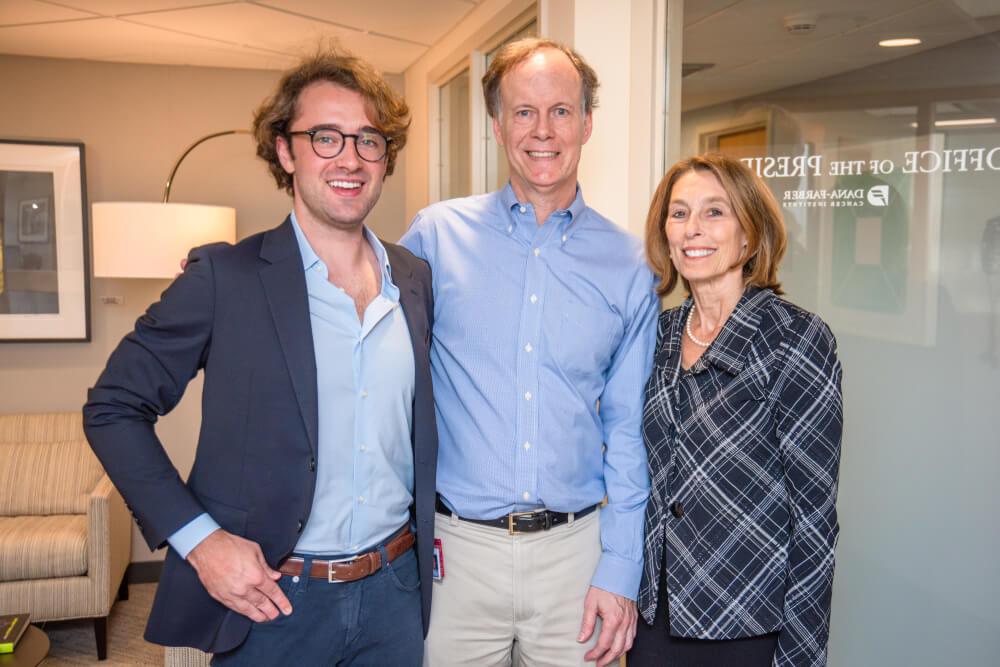Why I am grateful for Dana-Farber Cancer Hospital
 I have many reasons to be grateful to this hospital. I’ve never been a patient, but the news that their Dr. William G. Kaelin, had been awarded the 2019 Nobel Prize for Medicine made me very happy.
I have many reasons to be grateful to this hospital. I’ve never been a patient, but the news that their Dr. William G. Kaelin, had been awarded the 2019 Nobel Prize for Medicine made me very happy.Why am a fan of this hospital?
Cancer treatment is frightening enough – but what can make it worse is side effects of the drugs. Everyone reacts differently, but with doctors and nurses rushed off their feet, as a patient I felt I was a nuisance asking for help with bloody blisters, gumboils, fatigue and blindness in one eye.
Being British, I felt I was letting the side down if my ‘stiff upper lip’ wobbled.
But, in the wonderful way that can happen with the Internet, I made ‘cyber friends’ with someone who worked at Dana-Faber. I would send over an email with my latest worries, especially about side effects, and back would come links leading me to information and videos on their website. Written by doctors, obviously approved by patients as it is all in understandable language, and available for free!
Sadly I don’t think she is still with us, but anyone who comments about prices of US healthcare, should remember this pays for a whole raft of suberb medically-sound advice that is free to access on US cancer hospital websites. No longer did I have to listen to doctors who told me “we’ve never seen this before”. There it was – up on the Dana-Farber website. And I could print it out and shove it under their turned-up noses!
Nobel prize
“We’re all incredibly proud of Dr. Kaelin – and hopeful for the promise this means for patients here and everywhere,” said Laurie Glimcher, President of Dana-Farber. The body’s mechanism for adapting to changing oxygen levels “is essential for survival,” she added, “and understanding it and being able to manipulate it are already being used to develop exciting new treatments for cardiovascular disease and cancer.”

Kaelin said at the press conference that he and his late wife, Carolyn Mary Kaelin, MD, MPH, had talked about what would happen if he won the Nobel. Carolyn Kaelin, a breast surgeon at Dana-Farber/Brigham and Women’s Cancer Center, died in 2015. In the years immediately following her death, Kaelin said he had hoped the prize would not come so soon.
“It would be too bittersweet, too crushing to receive it without Carolyn,” he said. “Now I like to think she’s looking down and smiling and saying, ‘See, I told you it was going to happen!”
Kaelin said that while he did not formally collaborate with the other two Nobel winners, he said the research was inherently collaborative.
“They were reading my papers and I was reading their papers, and when we would see each other at scientific conferences we were talking about things that were going to appear in publications six months later,” he said. “In my view, that really accelerated the field.”
He added that “science is done in an ecosystem” of collaborators and other scientists working in related fields. He made special mention of David Livingston, MD, in whose Dana-Farber laboratory Kaelin trained. “He was — and is — my mentor,” Kaelin said. “He taught me how to be a scientist.”
The science behind the research
William G. Kaelin Jr., Sir Peter J. Ratcliffe and Gregg L. Semenza were jointly awarded the Nobel prize for their discoveries of how cells sense and adapt to oxygen availability
Animals need oxygen for the conversion of food into useful energy. The fundamental importance of oxygen has been understood for centuries, but how cells adapt to changes in levels of oxygen has long been unknown.
William G. Kaelin Jr., Sir Peter J. Ratcliffe and Gregg L. Semenza discovered how cells can sense and adapt to changing oxygen availability. They identified molecular machinery that regulates the activity of genes in response to varying levels of oxygen.
The seminal discoveries by this year’s Nobel Laureates revealed the mechanism for one of life’s most essential adaptive processes. They established the basis for our understanding of how oxygen levels affect cellular metabolism and physiological function. Their discoveries have also paved the way for promising new strategies to fight anemia, cancer and many other diseases.
So it seems that many of us will have reason to be grateful to this trio.
